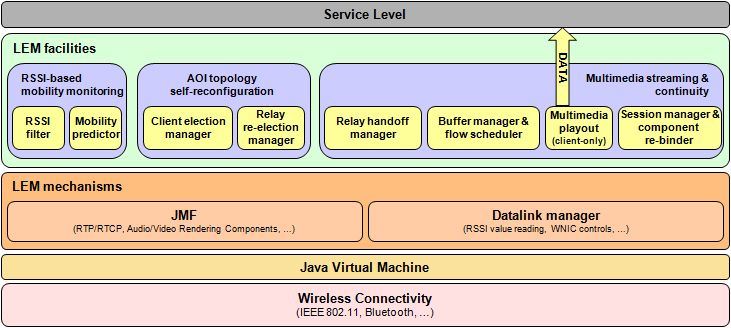The LEM adopts a layered architecture. The lower mechanism layer hides technological idiosyncrasies and provides uniform functions to: i) access/control Wireless Network Interface Card (WNIC) and gather received signal strength indication (RSSI) monitoring data; ii) manage and render multimedia flows via standard application-layer protocols, such as Real-time Transport Protocol (RTP), and standard APIs, such as Java Media Framework (JMF).
|
The higher LEM facility layer consists of three main components that interwork to handle the three core management functions.
-
RSSI-based mobility monitoring triggers promptly, and possibly proactively, relay handoff management and streaming (de-)activation toward clients that exit/enter the AOI.
-
AOI topology self-reconfiguration chooses and accommodates/detaches clients in the circular crown around the centermost relay; in addition, it elects the new relay in case of handoff.
-
Multimedia streaming & continuity realizes the relay handoff protocol, by ensuring data continuity via a two-level buffering solution, with one buffer stored at client and one at relay, and is responsible and controls all multimedia flow transmissions within the AOI.
RSSI-based mobility monitoring, AOI topology self-reconfiguration, and Multimedia streaming & continuity components dynamically form a pipeline; each stage of the pipeline exploits output data from the previous stage to trigger control actions over the following stage.
|
